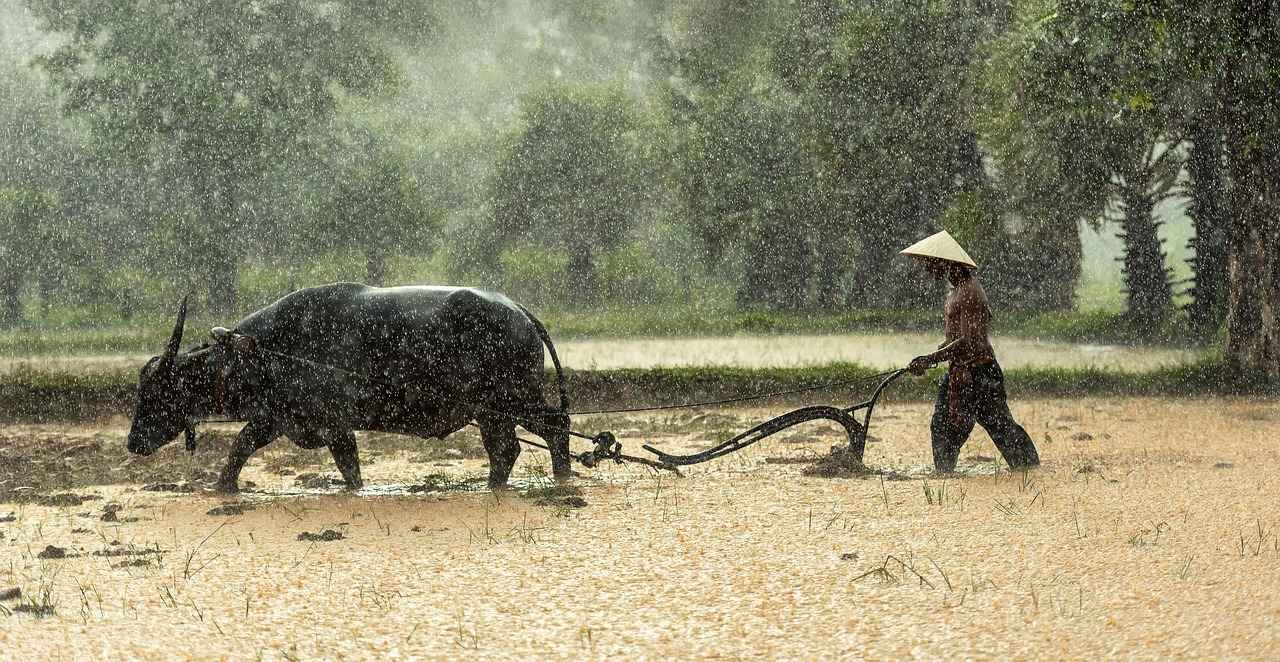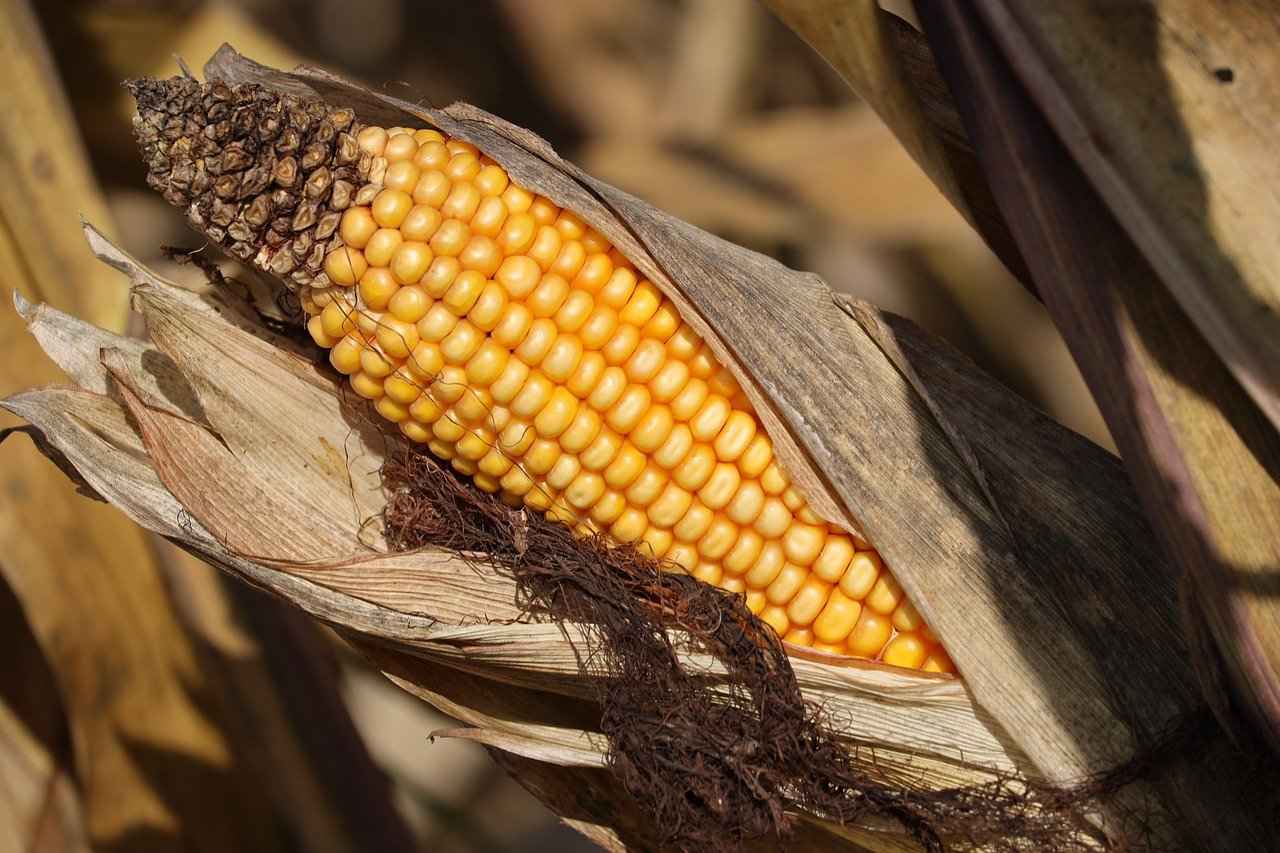This article delves into the importance of West Bengal’s agriculture sector, focusing on its vital contributions to the economy, employment opportunities, and food security. Additionally, it addresses the challenges and opportunities that this sector faces, providing a comprehensive overview of its current state and future potential.
The Economic Contribution of Agriculture in West Bengal
West Bengal’s agriculture sector is a cornerstone of the state’s economy, contributing significantly to its overall Gross Domestic Product (GDP). This sector not only supports the livelihoods of millions but also plays a pivotal role in sustaining local economies through various agricultural activities.
Key Crops of West Bengal
The agricultural diversity in West Bengal is remarkable, with key crops such as rice, jute, and various vegetables thriving in the region. This variety not only showcases the agricultural richness of West Bengal but also enables it to meet the demands of both local and national markets.
Rice Production in West Bengal
As the leading rice-producing state in India, West Bengal benefits from fertile soil and favorable climatic conditions, making it an ideal location for high-yield rice cultivation. This not only supports food security but also bolsters economic stability in the region.
Impact of Rice on Local Economy
Rice farming is crucial for local communities, generating significant income for farmers and contributing to the overall economic health of West Bengal. This ensures food availability for millions and sustains rural livelihoods.
Challenges in Rice Cultivation
Despite its prominence, rice cultivation faces several challenges, including climate change, water scarcity, and pest infestations. These factors can adversely affect yields and threaten farmers’ livelihoods, underscoring the need for adaptive strategies.
Jute and Its Economic Importance
West Bengal is the largest producer of jute in India, a cash crop that significantly impacts the economy by providing employment and supporting various industries, including textiles and packaging.
Employment Opportunities in Agriculture
The agriculture sector in West Bengal is a major source of employment, engaging a large workforce in farming, processing, and distribution. This contributes to rural development and plays a crucial role in poverty alleviation.
Women in Agriculture
Women are integral to West Bengal’s agricultural landscape, participating in various farming activities. Their contributions are vital for enhancing productivity and fostering community resilience.
Skill Development and Training Programs
Skill development initiatives aimed at training farmers are essential for improving agricultural practices, increasing productivity, and ensuring sustainable development within the sector.
Challenges Facing West Bengal’s Agriculture Sector
Despite its strengths, West Bengal’s agriculture sector confronts numerous challenges, including land degradation, inadequate infrastructure, and fluctuating market prices. Addressing these issues requires strategic interventions.
Climate Change and Its Impact
Climate change poses a significant threat to agriculture in West Bengal, impacting crop yields and sustainability. This highlights the urgent need for adaptive measures and resilient farming practices.
Government Initiatives and Support
The government has implemented various schemes and policies to support farmers, enhance agricultural practices, and improve productivity. These efforts are crucial for the growth of West Bengal’s agriculture sector.
The Future of Agriculture in West Bengal
Looking ahead, the agriculture sector in West Bengal holds immense potential for growth and innovation. Driven by technology, research, and sustainable practices, it is poised to remain a vital component of the Indian economy.

The Economic Contribution of Agriculture in West Bengal
West Bengal’s agriculture sector is a vital component of the state’s economy, playing an essential role in enhancing the overall economic landscape. With a contribution of approximately 25% to the state’s GDP, agriculture is much more than just a means of livelihood; it is a cornerstone of food security and rural development.
This sector employs over 60% of the state’s workforce, making it a significant source of employment. The diverse range of agricultural activities provides livelihoods for millions, including farmers, laborers, and those involved in processing and distribution. The importance of agriculture extends beyond mere numbers; it shapes the social fabric of rural communities, fostering a sense of identity and belonging.
Furthermore, the agricultural practices in West Bengal are characterized by a variety of crops, notably rice, jute, and vegetables. The state is renowned for its high-yield rice production, which not only supports local consumption but also contributes to national food security. The cultivation of jute, on the other hand, positions West Bengal as the leading producer in India, further enhancing its economic significance.
However, the sector is not without its challenges. Issues such as climate change, inadequate infrastructure, and fluctuating market prices pose threats to productivity and farmers’ livelihoods. Addressing these challenges requires innovative solutions and government support to ensure the sustainability of agricultural practices.
In conclusion, the agriculture sector in West Bengal is a vital pillar of the state’s economy, contributing significantly to employment and food security. To maintain its relevance and growth, ongoing investments in technology, training, and infrastructure are essential. By prioritizing these areas, West Bengal can enhance its agricultural output and ensure a prosperous future for its farming communities.

Key Crops of West Bengal
West Bengal is renowned for its diverse agricultural landscape, which is characterized by a wide variety of crops that not only sustain the local population but also contribute significantly to the national economy. The state’s favorable climatic conditions and fertile alluvial soil create an ideal environment for the cultivation of numerous crops.
- Rice: As the leading rice-producing state in India, West Bengal cultivates a significant amount of both Kharif and Rabi rice. This staple food is essential for local consumption and plays a crucial role in ensuring food security across the nation.
- Jute: West Bengal is the largest producer of jute in India, which is often referred to as the golden fiber. This cash crop not only provides livelihoods for many farmers but also supports various industries, including textiles and packaging.
- Vegetables: The state is also famous for its diverse range of vegetables, including potatoes, tomatoes, and cauliflower. These crops are vital for local markets and contribute to the nutritional needs of the population.
- Fruits: West Bengal produces a variety of fruits such as mangoes, bananas, and guavas. The state’s climatic conditions allow for the cultivation of both tropical and subtropical fruits, which are in high demand in both local and national markets.
The agricultural diversity in West Bengal not only showcases the region’s richness but also highlights its potential to cater to both local and national markets. The ability to produce a wide range of crops ensures that the state remains a vital component of India’s agricultural framework.
In conclusion, the varied agricultural outputs of West Bengal are a testament to the state’s rich agricultural heritage and its importance in contributing to the food security and economic stability of India.
Rice Production in West Bengal
is not just a significant agricultural activity but also a cornerstone of the state’s economy and culture. As the leading rice-producing state in India, West Bengal benefits from ideal climatic conditions and fertile soil, which together create an environment conducive to high-yield rice cultivation. This not only supports food security but also plays a crucial role in ensuring economic stability for millions of residents.
The state’s unique geographical features, including its extensive river systems and favorable monsoon patterns, enhance its agricultural productivity. The diversity of rice varieties cultivated in West Bengal, such as Boro, Aman, and Aush, showcases the region’s adaptability and innovation in rice farming.
Furthermore, rice farming serves as a vital source of income for many families. The economic impact extends beyond the fields, as rice production stimulates local markets, creates job opportunities, and supports ancillary industries such as processing and distribution. According to recent statistics, rice production in West Bengal accounts for over 15% of India’s total output, highlighting its significance on a national scale.
However, the rice sector faces several challenges. Issues such as climate change, water scarcity, and pest infestations threaten to undermine the hard-won gains in rice productivity. Farmers are increasingly adopting sustainable practices and innovative technologies to mitigate these challenges and secure their livelihoods.
In conclusion, rice production in West Bengal is a vital component of the state’s agricultural landscape. It not only ensures food availability for millions but also contributes significantly to the economic health of the region. As the state navigates the challenges ahead, the resilience and adaptability of its farmers will be key to sustaining this essential sector.
Impact of Rice on Local Economy
Rice farming in West Bengal is a cornerstone of the local economy, significantly impacting both the livelihoods of farmers and the broader economic landscape of the region. With a remarkable contribution to the state’s GDP, rice cultivation not only supports individual farmers but also sustains entire communities.
As the leading rice-producing state in India, West Bengal benefits from its fertile soil and favorable climatic conditions, which are ideal for high-yield rice varieties. This agricultural success translates into substantial income for farmers, enabling them to invest in their families and communities. The economic ripple effect is profound; as farmers earn more, they spend more on local goods and services, thereby stimulating the economy.
Moreover, rice production plays a crucial role in ensuring food security for millions of people. The state produces a significant surplus that not only meets local demands but also contributes to national food supplies. This availability of rice helps stabilize food prices and prevents shortages, which is vital in a country where food security remains a pressing issue.
In addition to direct economic benefits, rice farming fosters job creation in various sectors, including processing, transportation, and marketing. This creates a diverse range of employment opportunities, particularly in rural areas where alternative job prospects may be limited. The agricultural sector thus serves as a vital engine for rural development, helping to alleviate poverty and improve living standards.
However, the rice farming community faces challenges, such as climate change and fluctuating market prices, which can threaten their livelihoods. Addressing these challenges through sustainable practices and government support is essential to ensure the continued viability of rice farming in West Bengal.
In conclusion, rice farming is not just an agricultural activity; it is a vital component of West Bengal’s economic fabric. By sustaining local communities, generating income, and ensuring food availability, rice production significantly contributes to the overall health of the state’s economy and the well-being of its people.
Challenges in Rice Cultivation
Rice is a staple food for a significant portion of the global population, particularly in regions like West Bengal, India, where it is a primary crop. However, despite its critical importance, rice cultivation is increasingly facing a myriad of challenges that threaten both yields and the livelihoods of farmers.
- Climate Change: One of the most pressing issues is climate change, which leads to unpredictable weather patterns. Increased temperatures, erratic rainfall, and extreme weather events can adversely affect rice production. Farmers are often unprepared for these changes, resulting in reduced crop yields.
- Water Scarcity: Rice cultivation is highly water-intensive, requiring substantial irrigation. However, many regions, including West Bengal, are experiencing water scarcity due to over-extraction of groundwater and changing rainfall patterns. This scarcity can lead to crop failure and economic instability for farmers.
- Pest Infestations: The rise in pest populations, exacerbated by climate change and monoculture practices, poses another significant threat. Pests can decimate rice crops, leading to lower yields and increased reliance on chemical pesticides, which can harm the environment and human health.
- Soil Degradation: Continuous rice farming without proper crop rotation can lead to soil degradation. The depletion of essential nutrients reduces soil fertility, making it difficult to sustain high yields over time.
- Market Fluctuations: Farmers are also vulnerable to fluctuating market prices for rice, which can affect their income stability. Price drops can lead to financial strain, making it challenging for farmers to invest in necessary inputs for future crops.
To address these challenges, farmers must adopt adaptive strategies such as implementing sustainable farming practices, diversifying crops, and utilizing technology for better water management and pest control. Government support and investment in research are also crucial to developing resilient agricultural systems that can withstand these challenges.
In conclusion, while rice cultivation is vital for food security and economic stability, it is essential to recognize and address the challenges it faces. By fostering resilience through innovation and sustainable practices, the future of rice farming can be secured.
Jute and Its Economic Importance
West Bengal stands out as the largest producer of jute in India, significantly contributing to the state’s economy and the agricultural landscape. This cash crop not only plays a vital role in generating income for farmers but also supports a myriad of industries, particularly in textiles and packaging.
Jute, often referred to as the “golden fiber,” is prized for its versatility and eco-friendliness. The cultivation of jute provides employment to millions of people in West Bengal, from farmers to laborers involved in processing and distribution. The jute industry is deeply intertwined with the livelihoods of rural communities, making it a cornerstone of the local economy.
| Aspect | Details |
|---|---|
| Production Volume | West Bengal accounts for over 70% of India’s total jute production. |
| Employment Generation | Approximately 4 million people are directly or indirectly employed in the jute sector. |
| Export Potential | Jute products are exported to various countries, contributing significantly to foreign exchange earnings. |
The significance of jute extends beyond mere economic metrics. It plays a crucial role in sustainable agriculture and environmental conservation. As a biodegradable fiber, jute is an excellent alternative to synthetic materials, aligning with global trends towards sustainability.
However, the jute industry also faces challenges, including fluctuating market prices and competition from synthetic fibers. To address these issues, the government and various organizations are implementing supportive measures such as subsidies, research initiatives, and skill development programs aimed at enhancing productivity and ensuring the industry’s long-term viability.
In conclusion, jute remains an integral part of West Bengal’s agricultural framework, offering substantial economic benefits while promoting sustainable practices. As the industry evolves, it holds the potential for further growth and innovation, reinforcing its position as a vital contributor to both the state and national economies.

Employment Opportunities in Agriculture
The agriculture sector in West Bengal is a major source of employment, engaging a large workforce in various activities such as farming, processing, and distribution. This sector plays a crucial role in rural development and poverty alleviation, providing livelihoods for millions of individuals and families.
Significance of Agricultural Employment
- Approximately 60% of the population in West Bengal is involved in agriculture, either directly or indirectly.
- Employment opportunities span across crop cultivation, livestock rearing, and agricultural services.
- The sector also supports a variety of ancillary businesses, including food processing and distribution networks.
Women’s Contribution to Agriculture
Women play a significant role in West Bengal’s agricultural landscape. They are often engaged in:
- Fieldwork: Planting, weeding, and harvesting crops.
- Post-harvest activities: Processing and packaging agricultural products.
- Market participation: Selling produce in local markets.
Their contributions not only enhance productivity but also foster community resilience, making them integral to the sector’s growth.
Skill Development Initiatives
To address the evolving needs of the agricultural sector, various skill development and training programs have been initiated. These include:
- Workshops on sustainable farming practices.
- Training in modern agricultural techniques and technologies.
- Programs aimed at enhancing market access and financial literacy.
Such initiatives are essential for improving agricultural practices, increasing productivity, and ensuring sustainable development in the sector.
Future Prospects
As the agriculture sector in West Bengal continues to evolve, the emphasis on innovation and technology will likely create even more employment opportunities. By integrating advanced practices and sustainable approaches, the sector can enhance its contribution to the economy while addressing the challenges of rural poverty.
Women in Agriculture
play an essential and multifaceted role in the agricultural landscape of West Bengal. Their involvement extends beyond mere participation; they are pivotal in driving productivity and ensuring the sustainability of farming practices. This article delves into the various dimensions of women’s contributions to agriculture in West Bengal, highlighting their significance in enhancing community resilience and economic stability.
In West Bengal, women are not just helpers on farms; they are key decision-makers and skilled agricultural workers. Engaged in diverse activities such as planting, harvesting, and post-harvest processing, women significantly influence the agricultural output. Their intimate knowledge of local crops and farming techniques allows them to adapt practices that enhance both yield and quality.
- Empowerment through Education: Many women in rural areas are now participating in training programs that equip them with modern agricultural techniques. This empowerment not only boosts their confidence but also improves productivity.
- Community Leaders: Women often take on leadership roles within their communities, organizing collective farming efforts and sharing resources, which fosters a sense of solidarity and resilience.
- Economic Contributors: By managing household finances and contributing to family income through agricultural activities, women play a crucial role in combating poverty and enhancing the economic status of families.
Despite their significant contributions, women face numerous challenges, including limited access to resources, land ownership issues, and societal constraints. Addressing these barriers is vital for unlocking their full potential in the agricultural sector.
In conclusion, the role of women in West Bengal’s agriculture is indispensable. By recognizing and supporting their contributions, we can enhance productivity and foster a more resilient agricultural community. Strategies aimed at empowering women in agriculture will not only benefit the individuals involved but also contribute to the broader economic and social fabric of West Bengal.
Skill Development and Training Programs
are critical components in enhancing the agricultural landscape of West Bengal. These initiatives aim to equip farmers with the necessary skills and knowledge to adopt modern agricultural practices, thereby improving productivity and ensuring sustainability in the sector.
In recent years, various organizations and government bodies have recognized the importance of training programs tailored specifically for farmers. These programs focus on innovative farming techniques, pest management, and efficient resource utilization, which are vital for adapting to changing climatic conditions and market demands.
- Workshops and Seminars: Regular workshops are conducted to educate farmers about the latest advancements in agriculture, including organic farming and the use of technology in farming practices.
- Field Demonstrations: Practical demonstrations in the field allow farmers to see the benefits of new techniques firsthand, encouraging them to adopt these practices.
- Collaboration with Agricultural Universities: Partnerships with local agricultural universities provide access to research and expert knowledge, helping farmers improve their yields.
Moreover, government initiatives play a significant role in promoting skill development. Programs like the Pradhan Mantri Krishi Sinchai Yojana focus on efficient irrigation techniques, while the Soil Health Card Scheme educates farmers on soil management and fertility, ensuring that they make informed decisions regarding crop cultivation.
Furthermore, the inclusion of women in these training programs is essential. Women constitute a significant portion of the agricultural workforce in West Bengal, and empowering them through skill development initiatives leads to enhanced productivity and improved family incomes.
In conclusion, are indispensable for the growth of West Bengal’s agriculture sector. By continuing to invest in these initiatives, the state can ensure sustainable agricultural practices, improve food security, and bolster the livelihoods of its farmers.

Challenges Facing West Bengal’s Agriculture Sector
West Bengal’s agriculture sector, while being a cornerstone of the state’s economy, is grappling with a myriad of challenges that threaten its sustainability and growth. These challenges, if not addressed, could undermine the significant contributions that agriculture makes to both the local and national economies.
- Land Degradation: One of the most pressing issues is land degradation. Overuse of chemical fertilizers and improper farming practices have led to soil erosion and depletion of nutrients. This not only affects crop yields but also endangers the long-term viability of the land.
- Inadequate Infrastructure: The lack of adequate infrastructure, including poor transportation networks and insufficient storage facilities, hampers farmers’ ability to market their produce effectively. This results in increased post-harvest losses and reduced income for farmers.
- Fluctuating Market Prices: Farmers often face the unpredictability of market prices, which can fluctuate dramatically due to various factors, including demand-supply mismatches and global market trends. This volatility makes it difficult for farmers to plan their production and manage their finances.
- Climate Change: The impacts of climate change are increasingly evident in West Bengal. Erratic rainfall patterns, rising temperatures, and extreme weather events pose significant risks to agricultural productivity, necessitating urgent adaptation strategies.
- Pest Infestations: The rise in pest populations, exacerbated by changing climatic conditions, poses a threat to crop health. Farmers need to adopt integrated pest management practices to mitigate these risks effectively.
Addressing these challenges requires strategic interventions from both the government and the agricultural community. Initiatives such as improved training for farmers, investment in sustainable farming practices, and the development of robust agricultural policies are essential for fostering resilience in West Bengal’s agriculture sector.
In conclusion, while West Bengal’s agriculture sector faces significant challenges, there are also numerous opportunities for improvement. By implementing targeted strategies and embracing innovation, the sector can overcome these hurdles and continue to thrive, ensuring food security and economic stability for millions.
Climate Change and Its Impact
Climate change is increasingly recognized as a formidable challenge that significantly impacts the agricultural landscape of West Bengal. The state’s diverse agricultural practices, which include the cultivation of staple crops like rice and jute, are now facing unprecedented threats due to changing climatic conditions.
With rising temperatures and erratic rainfall patterns, farmers in West Bengal are experiencing decreased crop yields. This decline not only threatens the livelihoods of millions but also jeopardizes food security for the entire region. The traditional farming methods that have sustained communities for generations are becoming less effective in the face of these environmental changes.
Moreover, water scarcity is emerging as a critical issue. The availability of water for irrigation is dwindling, leading to increased competition among agricultural and urban needs. This situation is exacerbated by the over-extraction of groundwater and the contamination of water sources, which further complicates the agricultural scenario.
In addition to water issues, pest infestations are becoming more prevalent as warmer temperatures create favorable conditions for pests and diseases that threaten crops. Farmers are now compelled to adopt chemical pesticides, which can lead to long-term soil degradation and health concerns.
Recognizing these challenges, there is an urgent need for adaptive measures in farming practices. Implementing resilient agricultural strategies, such as crop diversification, sustainable water management, and integrated pest management, can help mitigate the adverse effects of climate change. Additionally, investing in research and development of climate-resilient crop varieties will be crucial for maintaining productivity.
In conclusion, addressing the impact of climate change on agriculture in West Bengal is imperative. By fostering innovation and promoting sustainable practices, the state can enhance its agricultural resilience, ensuring food security and economic stability for future generations.
Government Initiatives and Support
The government of West Bengal has recognized the importance of agriculture as a cornerstone of the state’s economy. To bolster this vital sector, various schemes and policies have been implemented, aimed at supporting farmers, enhancing agricultural practices, and increasing overall productivity.
One of the key initiatives is the Krishak Bandhu Scheme, which provides financial assistance to farmers during difficult times, ensuring they have the necessary resources to sustain their livelihoods. This scheme not only offers direct monetary support but also promotes the adoption of modern farming techniques.
| Scheme Name | Objective | Target Beneficiaries |
|---|---|---|
| Krishak Bandhu Scheme | Financial support for farmers | Small and marginal farmers |
| Paschim Banga Khadya Suraksha Yojana | Food security for the poor | Low-income households |
| Agri-Entrepreneurship Development Scheme | Encouragement of agri-based startups | Young entrepreneurs |
Moreover, the Paschim Banga Khadya Suraksha Yojana aims to ensure food security by providing subsidized food grains to the economically weaker sections of society. This initiative not only helps in alleviating hunger but also stabilizes demand for agricultural products.
In addition to these schemes, the government has established various training programs focused on enhancing farmers’ skills and knowledge. These programs cover a range of topics, from sustainable farming practices to the use of advanced technology in agriculture.
Furthermore, the government is actively promoting research and development in agriculture. Collaborations with agricultural universities and research institutions aim to innovate new farming techniques and develop high-yield crop varieties, which are essential for meeting the growing food demands of the population.
In conclusion, the government’s multifaceted approach to supporting the agriculture sector in West Bengal is crucial for enhancing productivity and ensuring the welfare of farmers. By continuing to invest in these initiatives, West Bengal can secure a prosperous future for its agricultural landscape.

The Future of Agriculture in West Bengal
As we look towards the future, the agriculture sector in West Bengal stands at a crucial juncture, poised for significant growth and innovation. This potential is primarily driven by advancements in technology, ongoing research, and the adoption of sustainable practices. These elements are essential not only for enhancing productivity but also for ensuring the sector’s continued relevance to the Indian economy.
- Technological Advancements: The integration of modern technologies such as precision farming, drone technology, and smart irrigation systems are transforming traditional farming methods. These innovations enable farmers to optimize resource use, increase crop yields, and reduce environmental impact.
- Research and Development: Continuous investment in agricultural research is vital for developing high-yielding crop varieties and climate-resilient practices. Collaborations between universities, government institutions, and private sectors are crucial for fostering innovation.
- Sustainable Practices: The shift towards sustainable agriculture is imperative for the long-term health of the ecosystem. Practices such as crop rotation, organic farming, and integrated pest management not only safeguard the environment but also enhance soil fertility and biodiversity.
Moreover, the agriculture sector plays a pivotal role in food security for the growing population of India. By focusing on sustainable growth, West Bengal can ensure that it meets the nutritional needs of its citizens while also contributing to the national economy.
In conclusion, the future of agriculture in West Bengal is promising, with the potential to drive economic growth and innovation. By embracing technology, enhancing research efforts, and prioritizing sustainable practices, West Bengal can solidify its position as a leader in the agricultural landscape of India.
Frequently Asked Questions
- What are the key crops produced in West Bengal?
West Bengal is renowned for its diverse agricultural output, with rice, jute, and various vegetables being the primary crops. Rice, in particular, is a staple that supports both local consumption and national markets.
- How does agriculture contribute to West Bengal’s economy?
Agriculture is a backbone of West Bengal’s economy, significantly contributing to the state’s GDP and providing livelihoods for millions. It creates jobs in farming, processing, and distribution, which are vital for rural development.
- What challenges does the agriculture sector face in West Bengal?
Despite its strengths, West Bengal’s agriculture sector grapples with challenges like climate change, water scarcity, and market fluctuations. These issues can impact crop yields and farmers’ income, necessitating strategic interventions.
- How important is rice cultivation to local communities?
Rice farming is crucial for local communities, generating substantial income for farmers and ensuring food security for millions. It not only sustains livelihoods but also strengthens the overall economic health of the region.
- What role do women play in West Bengal’s agriculture?
Women are integral to West Bengal’s agricultural landscape, engaging in various farming activities. Their contributions enhance productivity and foster community resilience, making them essential for sustainable agricultural practices.


























































